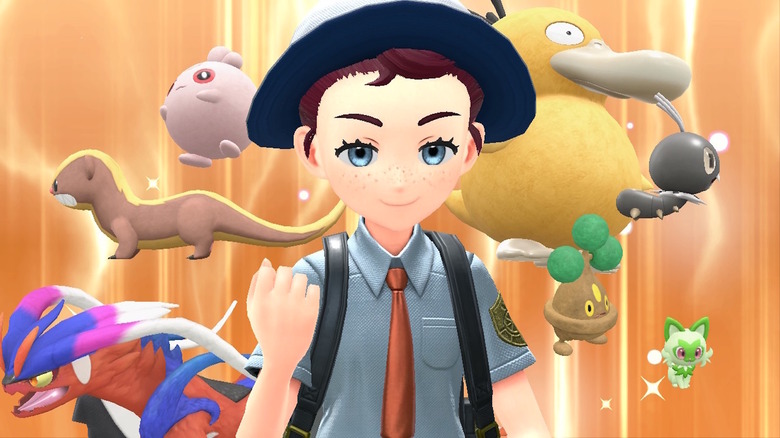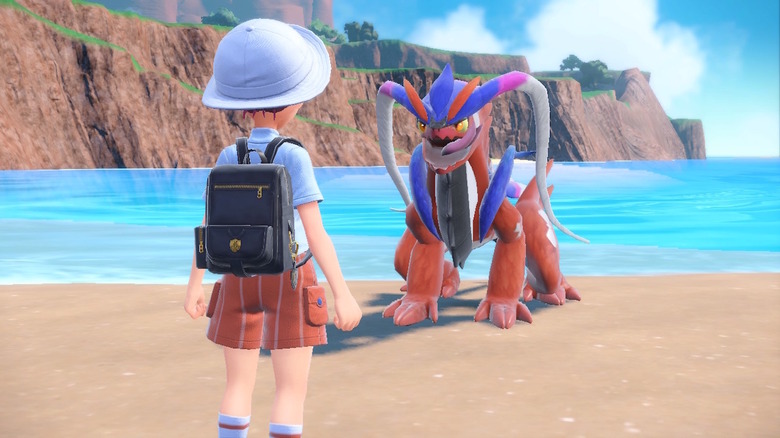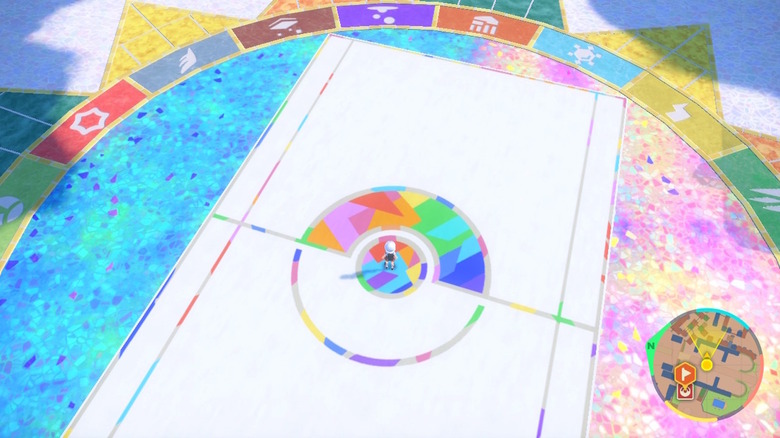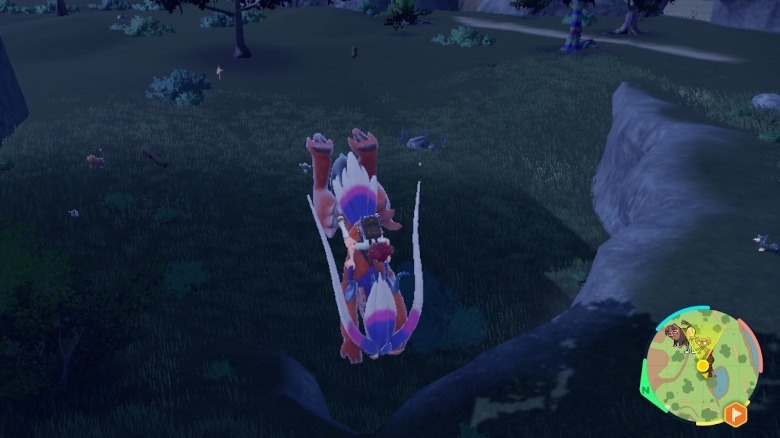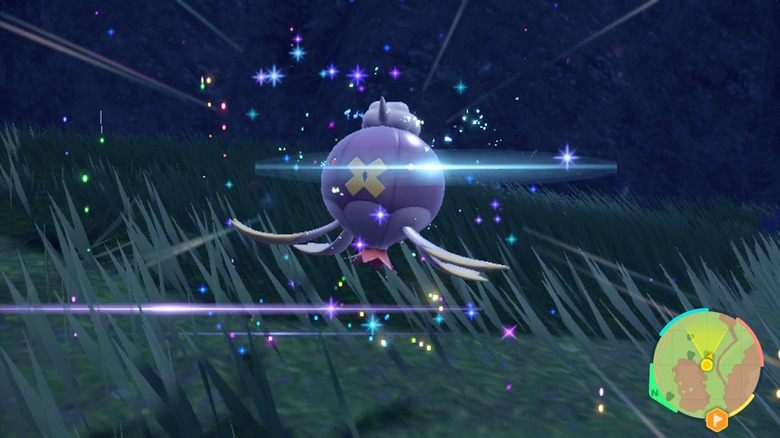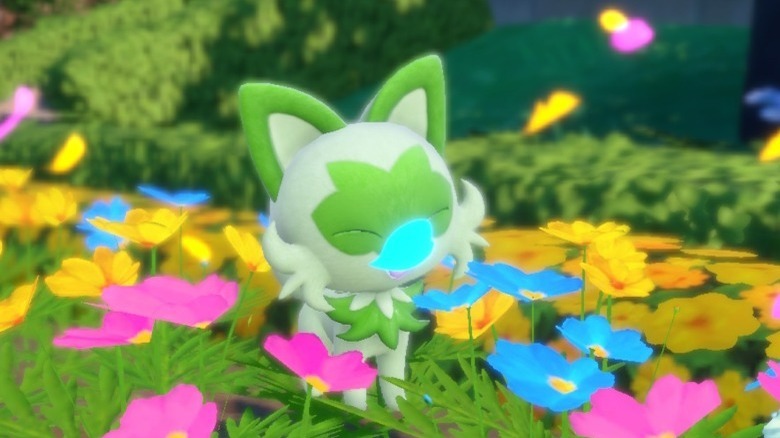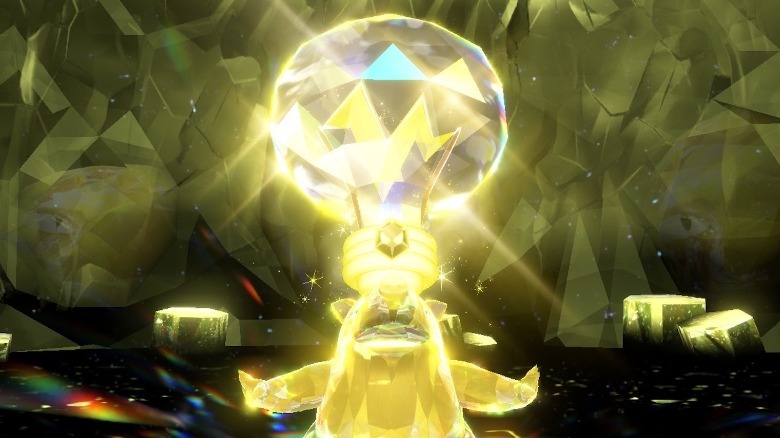Pokemon Scarlet And Violet Review: Good If You Squint
- Classic Pokémon battling
- Refreshing new storyline trajectories
- Hundreds of new Pokémon to discover
- Great after-campaign value
- Loaded with annoying bugs
- Graphics are not great
- Open-world potential neglected
On November 18, the next generation of Pokémon games hit shelves for Nintendo Switch. "Pokémon Scarlet" and "Pokémon Violet" wrap up a busy — and successful — year for Game Freak, with "Pokémon Legends: Arceus" also receiving very high remarks following its release back in January.
Arceus brought an important tone shift to the Pokémon universe. Longtime players got the breath of fresh air they needed after the same narrow hallway of gameplay: beat the gyms, hoard the badges, become the champion, rinse and repeat. Knowing that two more main series games were simmering on the horizon, we all held our breaths waiting to see how much of the reimagined approach to Pokémon — the open-world-inspired exploration, the non-linear gameplay, the branched storyline that encourages accomplishment outside of gyms — made it into "Scarlet" and "Violet," and how well GameFreak merges the new touches with the roots of classic Pokémon.
SlashGear was provided with a game code for "Pokémon Scarlet" and a game code for "Pokémon Violet" for the purpose of this review. This review refers to gameplay in both "Scarlet" and "Violet" unless mentioned otherwise.
First impressions: a slow start, as always
Like many Pokémon main series games, the first hour or so of gameplay is locked in a start-and-stop, slow-burn introduction to the storyline. You are obliged to the familiar Pokémon story progression as you, the child-wonder, make your way to school and are quickly recruited by a professor or peer for perilous missions that, really, no minor student should be recruited for ... but I digress. Depending on what you like about Pokémon, the beginning will either bore or engage you, as you're strung along from destination to destination in Paldea, on a none-too-hurried pace to Uva, the Pokémon trainer academy. You can update the settings to skip cutscenes if you'd rather speed through — but the harm is short-lived.
Even still, GameFreak's new era of reinvigorated Pokémon games meant that the short stretches between the early story updates are spent meandering grassy pockets of an open-world map — where wild Pokémon are teeming, waiting. I quickly secured and thoroughly enjoyed the adorably ugly Lechonk, but more on the hundreds of Pokémon to be discovered later.
On more thorough exploration, a seemingly unfinished diorama surrounded me
Once I finally got to Mesagoza, the city where the academy is located, the surface-level design was bright, colorful, and magnetic. It appeared that I had an enigmatic campus of shops, city streets, and NPCs to explore, but at closer inspection that enchanting and vibrant design felt like an eerie facade over a half-finished project — like those old-timey cartoons where the town strip is actually a giant cardboard cutout propped up to hide an open desert. Most side streets and alleys, where any quality open-world game would logically tuck away something cool to be discovered, were dead ends to nothing — dead ends that developers either forgot about or couldn't be bothered to expand on.
I'd say about two-thirds of the storefronts are not usable, just blank doors that can't be interacted with. Sure, some of that is to be expected, but would it really have been too much to at least drop in a couple of cafés, a library, a museum, more stores, something — even static, characterless backdrops where we could pick up a nugget of knowledge through an open book or score a unique item out of an abandoned box? Even with the majority of usable doors, you're not entering an actual shop — opening the door just drums up a menu to make purchases.
NPCs remain the same, for better or worse
Interacting with the NPCs gave the same unsettling "did I stumble onto a movie set?" feeling, outside of the four or so that are written into the main storyline. As with prior Pokémon games, most NPCs are programmed to rattle off a snippet of legend or lore, a helpful tidbit, or just oddball jokes and riddles. Somehow, GameFreak managed to make NPC pre-loaded conversation feel vapider than in games prior — it was disappointing and hysterical how generic and empty the dialogue was, just a couple dozen beige renditions of "Pokémon is good. I like Pokémon. Pokémon is cool."
But, for what it's worth, Pokémon NPCs continue to exhibit the same caricature mannerisms that are well-established in anime-style forms of entertainment: exaggerated facial expressions, squealing and jumping, and literal foot-stomping when disappointed. NPC animations have always been a sideshow of their own in Pokémon games, so at least that's consistent.
This was ubiquitous to all the towns and cities in the games, and I even felt there was a missed opportunity or two to really give us that complex, sprawling, open-world feeling in the undeveloped countryside of Paldea. The landscape is so promising — but also unrefined and underdeveloped. There were no "hidden gems," so to speak, nothing that felt like a stroke of luck or score to find.
This "I didn't start my project until the night before it was due" sensation I feel with this game would not be as big a deal to me, I think, had GameFreak stuck to the original development formula. But if you want us to hold Pokémon to the same standard as other beloved open-world games on Switch, you just can't do such a half-baked job on the open-world elements of your game and expect anything less than disappointment from players when a strong wind blows through and knocks your cardboard city down.
Are low-quality graphics laziness or nostalgia?
The graphics in Scarlet and Violet are as bad as they were in the advertisements, if not worse. There really shouldn't be any acceptable reason — after over two decades of games — that NPCs walk at 8-bit speeds in the distance, flying Pokémon in the background often freeze midair, and the awfully pixelated backgrounds refresh at such low rates that you can literally see it happening while you're moving.
Are the janky graphics and insanely low frames-per-second rates just Pokémon's "thing" now — is this the game series' intentional aesthetic? Or is GameFreak just reaping the fact that new games will sell — and sell well, as the smashed record for fastest-selling Switch and Pokémon games shows, via Forbes — no matter the lack of quality in the details? As evident in the below screenshot of my avatar on the legendary Pokémon mid-jump, so much quality is lost in any movement.
I could maybe lean into the visual homage to the early aughts if the actual gameplay wasn't suffering a bit, too. Pop-ins, especially during wild Pokémon battles and transitions from one map sector to another, were occasional for me, but annoying. More often than not, it was that my legendary rideable Pokémon disappeared and I was just zipping around midair in a goofy sumo squat. It seems I was spared some of the most severe glitches — like this Twitter user that unwillingly found a portal to the under-other in "Violet" — but I just don't think there's any excuse for this bad of a Swiss cheese game schema in a household title like Pokémon.
There's speculation that the breaks in Scarlet and Violet can be blamed on bad SD cards or memory dumps — if it's the latter, I guess it's a waiting game to see if GameFreak fixes the leak.
The go-your-own-way gameplay
What "Scarlet" and "Violet" do well is that, while offering new objectives that encourage roaming the map, they also allow classic Pokémon game progression for those that want it. After Mesagoza and the central storyline releases you, there are three options, and of those is challenging gym leaders for a chance at the champion title, just like old days.
The personalities written into each gym leader are a treat, especially Iono, a character that's effectively a modern-day Twitch streamer. But I didn't want to fall into the gym battle song and dance right away, so I took the game's other paths: scrapping against the rogue student group Team Star (and their ridiculous semi-truck Pokémon) at their base camps, and seeking out the five Titan Pokémon that guard something desperately sought after by one of the auxiliary NPCs you're recruited to assist.
The detail and liveliness in these three branches of the story are impressive, and I don't think GameFreak could have chosen a better foundation for the games. Each campaign will make you curse, laugh, and give a heartfelt "awww" at least once. Not being bound to one trajectory at a time was awesome; I could spend an hour pursuing a Titan and switch over to the nearest gym if I got bored. Admittedly, I did get bored enough to put the game down entirely a couple of times, despite the range of activities at my disposal.
Even when sticking strictly to the completion of the game's main elements, you'll likely put in at least 25 hours to reach the credits screen, but expect to add another 10 more or so just for roaming the craggy deserts and billowing plains in pursuit of a complete Pokedex. The denouement of "Scarlet" and "Violet" is satisfying and wholesome, but isn't so all-encompassing that it encroaches on post-game value; even after the credits, there are a number of quests and mysteries to explore.
The reimagined Pokémon pack
In both "Scarlet" and "Violet," the initial storyline gives you a legendary Pokémon that, eventually, can be ridden as it jumps, swims, and glides about the map. This makes traversing Paldea both easier and more of a chore because while the beast is certainly faster than you, it also can get you stuck, especially if you haven't unlocked all of its capabilities.
For me personally, this looked like jumping off a cliff onto a grassy patch next to a pond — so the patch was sandwiched between cliff and pond — to catch a Pokémon. My legendary couldn't swim yet, so crossing the pond was out when I was ready to move on. I also couldn't jump back up the cliff — too high even for the Pokémon. The games' built-in fast taxi function was for whatever reason not available here either, so I spent way too long marooned on this grass patch with no foreseeable way out.
There are hundreds of new Pokémon to discover in the Paldean countryside, and while the core of battling and capturing the creatures is the same, there were a few interest-piquing new features. Your lead Pokémon can run alongside you or venture out in the nearby area with the "Let's go!" command, and they'll pick fights of their own to raise their own XP or bring you back materials to build with or sell.
It's not entirely a seamless system. Sometimes your dispatched Pokémon appears to not even see the enemy in front of it, coming back to you with a shrug, or it runs past the wild Pokémon you're targeting to battle an unfriendly that you know will send your Pokémon back with its tail between its legs — as was the case with my feisty small-fry starter, Sprigatito.
Terastallizing and open-world Pokemon
A new concept of "Terastallizing" Pokémon for battle really held my attention; a Terastallized Pokémon appears to become encased in crystal (and honestly looks kind of ridiculous, since the crystal hat they use looks like a giant light bulb) and switches to its Tera type — which could be the same as its original type or entirely new.
Moves under that Tera type become much more powerful. The concept added a new level of strategy to battling, especially when the Tera type is completely different from the Pokémon's regular type, and came in handy in the more difficult Team Star encounters. Glittering crystals all around the map indicate Tera raids — excellent ways to gain new Tera types and moves.
The behavior of wild Pokémon in open-world games is truly fascinating to watch. Herds and flocks moving through the grass, swimming in the water, etc. — there was a lot of effort put into the idle patterns of the free-range monsters. But the major problem caused by this structure is the unwilling participation in battles it causes; if you stumble upon a couple of tiny Azurills in the long grass, you don't even see the Pokémon until a battle is triggered. And it appears that other 'mon are still ambulating about in the background, and usually making their way closer to you. So as soon as you come out of one battle and turn around, bam — another is triggered.
Overall, I don't regret the hours put into Scarlet and Violet
Glitches aside, "Scarlet" and "Violet" are still two of the most fun installments in the main series franchise to date. There's humor, emotion, and adventure galore. I had a blast roaming the rocky cliffs, unwillingly falling into the water as I inched closer to a Gyarados, and feeding my legendary Pokémon sandwiches. But I do think that Nintendo, GameFreak, and The Pokemon Company have fallen complacent in their Pokémon game development. The fact that "Scarlet" and "Violet" were deemed finished and released in this state is shocking.
The problem is that this is not that good of a good game from an open-world concept, which is exactly what we were expecting. All of the ingredients for the best Pokémon game in history are there, but at this point, we are still patiently waiting for the team to execute the delivery. Hopefully, we will see the application of classic Pokémon style, intricate open-world strategies, fresh new storylines, and quality craftsmanship in graphics and design before the franchise turns 30.
